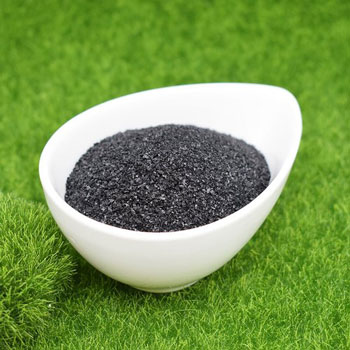Practical Application Cases of fulvic acid potassium (Part 1)
As a new type of organic-inorganic compound fertilizer, fulvic acid potassium is suitable for all kinds of crops. Under the same conditions of crop growth, they all show obvious contrast characteristics, and all have good yield-increasing effects.
The function and effect of fulvic acid potassium are different due to different types of crops, soils and growth conditions, resulting in different results. Wheat, corn, and cotton have the largest areas of promotion and application, while other crops have smaller areas of promotion and application.
The effect of promotion and application shows: The most obvious effect is vegetables and stem crops, such as cabbage, celery, radish, sweet potatoes and so on. Obvious effects are wheat, corn, rice and cotton. The medium effects are rape, peanut, soybean and so on.
The effect of long-term use of fulvic acid potassium for various crops will get better and better. In this article, the author first shares the actual case of the effect on wheat and corn.
Practical application case of fulvic acid potassium
1. Wheat application
During the growth period of wheat, the root system is developed and the overwintering tiller. It requires a large amount of fertilizer and takes a long time. The method of using fulvic acid potassium and applying foot fertilizer at one time is effective in windy sand, saline-alkali, and dry hills. Application in saline-alkali land with wind and sand will make the wheat leaves black and green in the early stage, strong seedlings, more tillers, vigorous growth in the middle stage, resistance to dry and hot wind in the later stage, little green stalks, and the wheat stalks are waxy yellow.
These surface features are in sharp contrast to those of wheat fields where other fertilizers are applied. In 1955, the experiment was conducted in the sandy field in Dongxia Town, Xihua County, the wheat yield can increase by 30%-40%, the yield can generally increase by more than 15%. Application on thin land in Hanling shows: The wheat grows evenly, the foot seedlings and the main seedlings are growing together, and the wheat ears are straight and full during the harvest, showing the drought resistance of fulvic acid potassium.
Jiao Mai Nao, Xicun Town, Gongyi City has been applying 50 kg of fulvic acid potassium per mu since 1994, and the output has increased year after year. From the beginning of more than 200 kilograms to more than 400 kilograms. In irrigated fields, it can reflect the robust lodging resistance of wheat stalks.
2. Corn application
The growth period of corn is short, and the amount of fertilizer required is concentrated. Single application of chemical fertilizer is not suitable for base fertilizer or topdressing at the seedling stage, which is easy to cause damage to the seedlings.
Fulvic acid potassium is suitable for base fertilizer or topdressing at seedling stage due to its stable performance and long fertilizer effect, so that the corn can absorb nutrients evenly throughout the growth process to achieve healthy seedlings and strong stalks, well-developed roots, and full grains.
There are three obvious characteristics:
One is that the seedling stage is strong and the stem is thick and not steep;
Second is that the leaf curl is smaller than the corn with other fertilizers in a drier climate. If the drought lasts for a week, the corn height is significantly higher than other fertilized corn;
The third is corn on the cob with full seeds and full ear tops. In 1997, when the corn harvest was half-dead, the yield of corn in Kang Xiaoben, Luokou Village, Gongyi City was still 450 kg per mu, and the yield increase effect was very obvious.
In this article, the author has popularized the effects of fulvic acid potassium on wheat and corn, and the remaining cases are about the effects of fulvic acid potassium on cotton, vegetables, and fruit trees. The author will be in tomorrow’s article“Practical Application Cases of fulvic acid potassium (Part 2)” to popularize to everyone.




评论
发表评论